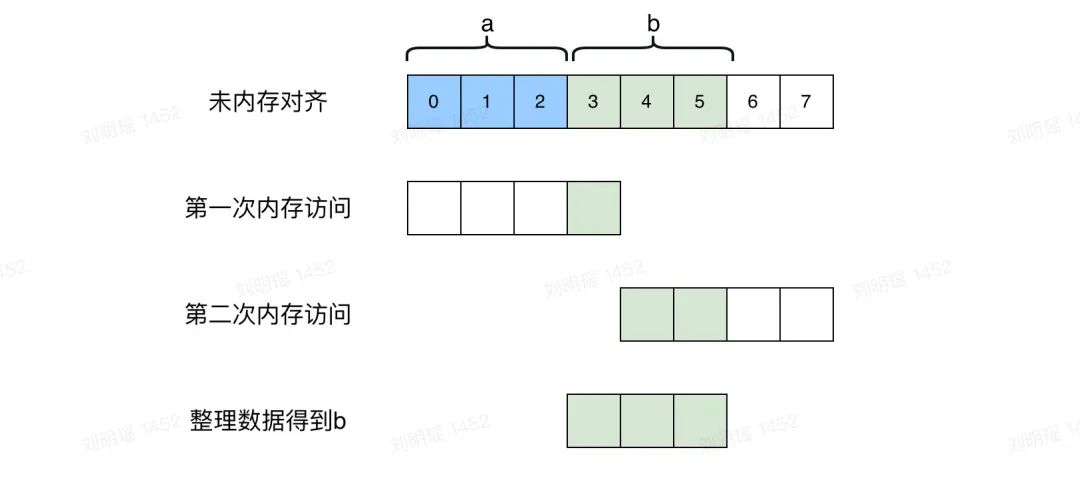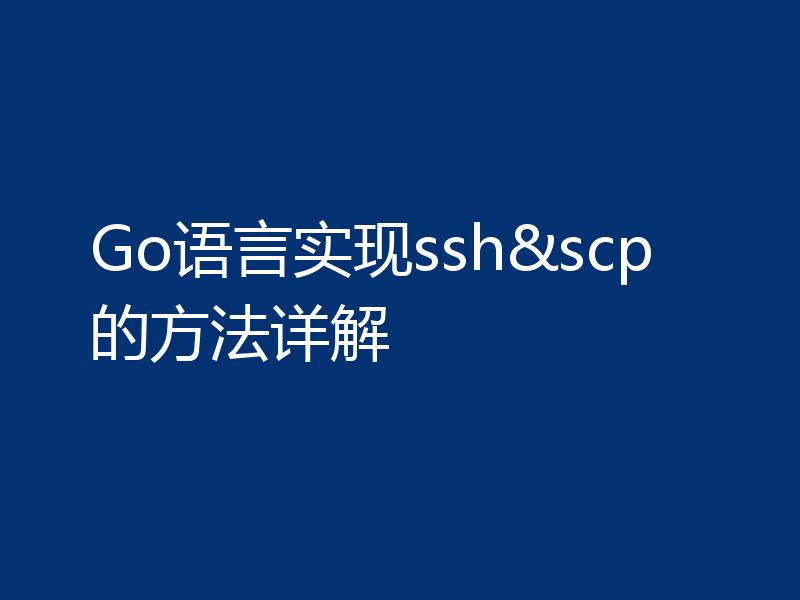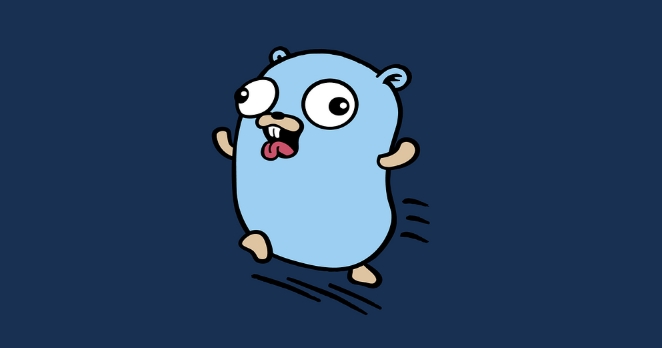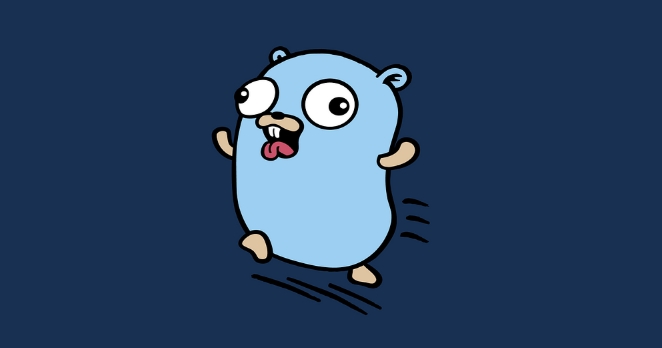深入了解Golang官方container/heap用法
在Golang实战开发的过程中,我们经常会遇到一些这样那样的问题,然后要卡好半天,等问题解决了才发现原来一些细节知识点还是没有掌握好。今天golang学习网就整理分享《深入了解Golang官方container/heap用法》,聊聊container、heap,希望可以帮助到正在努力赚钱的你。
开篇
在 Golang 的标准库 container 中,包含了几种常见的数据结构的实现,其实是非常好的学习材料,我们可以从中回顾一下经典的数据结构,看看 Golang 的官方团队是如何思考的。
- container/list 双向链表;
- container/ring 循环链表;
- container/heap 堆。
今天我们就来看看 container/heap 的源码,了解一下官方的同学是怎么设计,我们作为开发者又该如何使用。
container/heap
包 heap 为所有实现了 heap.Interface 的类型提供堆操作。 一个堆即是一棵树, 这棵树的每个节点的值都比它的子节点的值要小, 而整棵树最小的值位于树根(root), 也即是索引 0 的位置上。
堆是实现优先队列的一种常见方法。 为了构建优先队列, 用户在实现堆接口时, 需要让 Less() 方法返回逆序的结果, 这样就可以在使用 Push 添加元素的同时, 通过 Pop 移除队列中优先级最高的元素了。
heap 是实现优先队列的常见方式。Golang 中的 heap 是最小堆,需要满足两个特点:
- 堆中某个结点的值总是不小于其父结点的值;
- 堆总是一棵完全二叉树。
所以,根节点就是 heap 中最小的值。
有一个很有意思的现象,大家知道,Golang 此前是没有泛型的,作为一个强类型的语言,要实现通用的写法一般会采用【代码生成】或者【反射】。
而作为官方包,Golang 希望提供给大家一种简单的接入方式,官方提供好算法的内核,大家接入就 ok。采用的是定义一个接口,开发者来实现的方式。
在 container/heap 包中,我们一上来就能找到这个 Interface 定义:
// The Interface type describes the requirements
// for a type using the routines in this package.
// Any type that implements it may be used as a
// min-heap with the following invariants (established after
// Init has been called or if the data is empty or sorted):
//
// !h.Less(j, i) for 0
<p>除了 Push 和 Pop 两个堆自己的方法外,还内置了一个 sort.Interface:</p>
<pre class="brush:go;">type Interface interface {
Len() int
Less(i, j int) bool
Swap(i, j int)
}
核心函数
Init
作为开发者,我们基于自己的结构体,实现了 container/heap.Interface,该怎么用呢?
首先需要调用 heap.Init(h Interface) 方法,传入我们的实现:
// Init establishes the heap invariants required by the other routines in this package.
// Init is idempotent with respect to the heap invariants
// and may be called whenever the heap invariants may have been invalidated.
// The complexity is O(n) where n = h.Len().
func Init(h Interface) {
// heapify
n := h.Len()
for i := n/2 - 1; i >= 0; i-- {
down(h, i, n)
}
}
在执行任何堆操作之前, 必须对堆进行初始化。 Init 操作对于堆不变性(invariants)具有幂等性, 无论堆不变性是否有效, 它都可以被调用。
Init 函数的复杂度为 O(n) , 其中 n 等于 h.Len() 。
Pop/Push
作为堆,当然需要实现【插入】和【弹出】这两个能力,这里 any 其实就是 interface{}
// Push pushes the element x onto the heap.
// The complexity is O(log n) where n = h.Len().
func Push(h Interface, x any) {
h.Push(x)
up(h, h.Len()-1)
}
// Pop removes and returns the minimum element (according to Less) from the heap.
// The complexity is O(log n) where n = h.Len().
// Pop is equivalent to Remove(h, 0).
func Pop(h Interface) any {
n := h.Len() - 1
h.Swap(0, n)
down(h, 0, n)
return h.Pop()
}
- Push 函数将值为 x 的元素推入到堆里面,该函数的复杂度为 O(log(n)) 。
- Pop 函数根据 Less 的结果, 从堆中移除并返回具有最小值的元素, 等同于执行 Remove(h, 0),复杂度为 O(log(n))。(n 等于 h.Len() )
Remove
// Remove removes and returns the element at index i from the heap.
// The complexity is O(log n) where n = h.Len().
func Remove(h Interface, i int) any {
n := h.Len() - 1
if n != i {
h.Swap(i, n)
if !down(h, i, n) {
up(h, i)
}
}
return h.Pop()
}
Remove 函数移除堆中索引为 i 的元素,复杂度为 O(log(n))
Fix
有时候我们改变了堆上的元素,需要重新排序。这时候就可以用 Fix 来完成。
这里需要注意:
- 【先修改索引 i 上的元素的值然后再执行 Fix】
- 【先调用 Remove(h, i) 然后再使用 Push 操作将新值重新添加到堆里面】
二者具有同等的效果。但 Fix 的成本会小一些。复杂度为 O(log(n))。
// Fix re-establishes the heap ordering after the element at index i has changed its value.
// Changing the value of the element at index i and then calling Fix is equivalent to,
// but less expensive than, calling Remove(h, i) followed by a Push of the new value.
// The complexity is O(log n) where n = h.Len().
func Fix(h Interface, i int) {
if !down(h, i, h.Len()) {
up(h, i)
}
}
如何接入
将自定义结构实现上面的 heap.Interface 接口后,先进行 Init,随后调用上面我们提到的 Push / Pop / Remove / Fix 即可。其实大多数情况下用前两个就足够了,我们直接看两个例子。
IntHeap
先来看一个简单例子,基于整型 integer 实现一个最小堆。
- 首先定义一个自己的类型,在这个例子中是 int,所以这一步跳过;
- 定义一个 Heap 类型,这里我们使用
type IntHeap []int; - 实现自定义 Heap 类型的 5 个方法,三个 sort 的,加上 Push 和 Pop。
有了实现,我们 Init 后就可以 Push 进去元素了,这里我们初始化 2,1,5,又 push 了个 3,最后打印结果完美按照从小到大输出。
// This example demonstrates an integer heap built using the heap interface.
package main
import (
"container/heap"
"fmt"
)
// An IntHeap is a min-heap of ints.
type IntHeap []int
func (h IntHeap) Len() int { return len(h) }
func (h IntHeap) Less(i, j int) bool { return h[i] 0 {
fmt.Printf("%d ", heap.Pop(h))
}
}
Output:
minimum: 1
1 2 3 5
优先队列
官方也给出了实现优先队列的方法,我们需要一个 priority 作为权值,加上 value。
- Value 表示元素值
- Priority 用于排序
- Index 元素在对上的索引值,用于更新元素的操作。
// This example demonstrates a priority queue built using the heap interface.
package main
import (
"container/heap"
"fmt"
)
// An Item is something we manage in a priority queue.
type Item struct {
value string // The value of the item; arbitrary.
priority int // The priority of the item in the queue.
// The index is needed by update and is maintained by the heap.Interface methods.
index int // The index of the item in the heap.
}
// A PriorityQueue implements heap.Interface and holds Items.
type PriorityQueue []*Item
func (pq PriorityQueue) Len() int { return len(pq) }
func (pq PriorityQueue) Less(i, j int) bool {
// We want Pop to give us the highest, not lowest, priority so we use greater than here.
return pq[i].priority > pq[j].priority
}
func (pq PriorityQueue) Swap(i, j int) {
pq[i], pq[j] = pq[j], pq[i]
pq[i].index = i
pq[j].index = j
}
func (pq *PriorityQueue) Push(x any) {
n := len(*pq)
item := x.(*Item)
item.index = n
*pq = append(*pq, item)
}
func (pq *PriorityQueue) Pop() any {
old := *pq
n := len(old)
item := old[n-1]
old[n-1] = nil // avoid memory leak
item.index = -1 // for safety
*pq = old[0 : n-1]
return item
}
// update modifies the priority and value of an Item in the queue.
func (pq *PriorityQueue) update(item *Item, value string, priority int) {
item.value = value
item.priority = priority
heap.Fix(pq, item.index)
}
// This example creates a PriorityQueue with some items, adds and manipulates an item,
// and then removes the items in priority order.
func main() {
// Some items and their priorities.
items := map[string]int{
"banana": 3, "apple": 2, "pear": 4,
}
// Create a priority queue, put the items in it, and
// establish the priority queue (heap) invariants.
pq := make(PriorityQueue, len(items))
i := 0
for value, priority := range items {
pq[i] = &Item{
value: value,
priority: priority,
index: i,
}
i++
}
heap.Init(&pq)
// Insert a new item and then modify its priority.
item := &Item{
value: "orange",
priority: 1,
}
heap.Push(&pq, item)
pq.update(item, item.value, 5)
// Take the items out; they arrive in decreasing priority order.
for pq.Len() > 0 {
item := heap.Pop(&pq).(*Item)
fmt.Printf("%.2d:%s ", item.priority, item.value)
}
}
Output
05:orange 04:pear 03:banana 02:apple
按时间戳排序
package util
import (
"container/heap"
)
type TimeSortedQueueItem struct {
Time int64
Value interface{}
}
type TimeSortedQueue []*TimeSortedQueueItem
func (q TimeSortedQueue) Len() int { return len(q) }
func (q TimeSortedQueue) Less(i, j int) bool { return q[i].Time
<p>这里我们封装了一个 TimeSortedQueue,里面包含一个时间戳,以及我们实际的值。实现之后,就可以暴露对外的 NewTimeSortedQueue 方法用来初始化,这里调用 heap.Init。</p>
<p>同时做一层简单的封装就可以对外使用了。</p>
<h2>总结</h2>
<p>Go语言中heap的实现采用了一种 “模板设计模式”,用户实现自定义堆时,只需要实现heap.Interface接口中的函数,然后应用heap.Push、heap.Pop等方法就能够实现想要的功能,堆管理方法是由Go实现好的,存放在heap中。</p>
<p>今天带大家了解了container、heap的相关知识,希望对你有所帮助;关于Golang的技术知识我们会一点点深入介绍,欢迎大家关注golang学习网公众号,一起学习编程~</p>  详解Go语言中的内存对齐
详解Go语言中的内存对齐
- 上一篇
- 详解Go语言中的内存对齐

- 下一篇
- Go语言实现ssh&scp的方法详解
-

- Golang · Go教程 | 1分钟前 |
- Golang正则分组捕获与Submatch使用技巧
- 166浏览 收藏
-

- Golang · Go教程 | 8分钟前 |
- Golang去除字符串空格技巧分享
- 297浏览 收藏
-

- Golang · Go教程 | 13分钟前 |
- Golang单元测试与错误处理技巧
- 194浏览 收藏
-

- Golang · Go教程 | 14分钟前 |
- Golang语法怎么学快速掌握基础结构
- 501浏览 收藏
-

- Golang · Go教程 | 25分钟前 |
- GolangUDP数据收发实现教程
- 208浏览 收藏
-

- Golang · Go教程 | 31分钟前 | golang 本地依赖
- Golang本地依赖使用技巧详解
- 269浏览 收藏
-

- Golang · Go教程 | 47分钟前 |
- Golang字符串处理技巧分享
- 374浏览 收藏
-

- Golang · Go教程 | 52分钟前 |
- Golang安全并发map实现技巧
- 335浏览 收藏
-

- Golang · Go教程 | 59分钟前 | grpc 流控限流
- GolanggRPC限流实战教程详解
- 132浏览 收藏
-

- Golang · Go教程 | 1小时前 |
- 离线搭建Golang环境与依赖指南
- 230浏览 收藏
-

- Golang · Go教程 | 1小时前 |
- Golang字符串拼接优化方法分享
- 159浏览 收藏
-

- Golang · Go教程 | 1小时前 |
- DevOps优化与持续交付实战技巧
- 324浏览 收藏
-

- 前端进阶之JavaScript设计模式
- 设计模式是开发人员在软件开发过程中面临一般问题时的解决方案,代表了最佳的实践。本课程的主打内容包括JS常见设计模式以及具体应用场景,打造一站式知识长龙服务,适合有JS基础的同学学习。
- 543次学习
-

- GO语言核心编程课程
- 本课程采用真实案例,全面具体可落地,从理论到实践,一步一步将GO核心编程技术、编程思想、底层实现融会贯通,使学习者贴近时代脉搏,做IT互联网时代的弄潮儿。
- 516次学习
-

- 简单聊聊mysql8与网络通信
- 如有问题加微信:Le-studyg;在课程中,我们将首先介绍MySQL8的新特性,包括性能优化、安全增强、新数据类型等,帮助学生快速熟悉MySQL8的最新功能。接着,我们将深入解析MySQL的网络通信机制,包括协议、连接管理、数据传输等,让
- 500次学习
-

- JavaScript正则表达式基础与实战
- 在任何一门编程语言中,正则表达式,都是一项重要的知识,它提供了高效的字符串匹配与捕获机制,可以极大的简化程序设计。
- 487次学习
-

- 从零制作响应式网站—Grid布局
- 本系列教程将展示从零制作一个假想的网络科技公司官网,分为导航,轮播,关于我们,成功案例,服务流程,团队介绍,数据部分,公司动态,底部信息等内容区块。网站整体采用CSSGrid布局,支持响应式,有流畅过渡和展现动画。
- 485次学习
-

- ChatExcel酷表
- ChatExcel酷表是由北京大学团队打造的Excel聊天机器人,用自然语言操控表格,简化数据处理,告别繁琐操作,提升工作效率!适用于学生、上班族及政府人员。
- 3327次使用
-

- Any绘本
- 探索Any绘本(anypicturebook.com/zh),一款开源免费的AI绘本创作工具,基于Google Gemini与Flux AI模型,让您轻松创作个性化绘本。适用于家庭、教育、创作等多种场景,零门槛,高自由度,技术透明,本地可控。
- 3539次使用
-

- 可赞AI
- 可赞AI,AI驱动的办公可视化智能工具,助您轻松实现文本与可视化元素高效转化。无论是智能文档生成、多格式文本解析,还是一键生成专业图表、脑图、知识卡片,可赞AI都能让信息处理更清晰高效。覆盖数据汇报、会议纪要、内容营销等全场景,大幅提升办公效率,降低专业门槛,是您提升工作效率的得力助手。
- 3570次使用
-

- 星月写作
- 星月写作是国内首款聚焦中文网络小说创作的AI辅助工具,解决网文作者从构思到变现的全流程痛点。AI扫榜、专属模板、全链路适配,助力新人快速上手,资深作者效率倍增。
- 4694次使用
-

- MagicLight
- MagicLight.ai是全球首款叙事驱动型AI动画视频创作平台,专注于解决从故事想法到完整动画的全流程痛点。它通过自研AI模型,保障角色、风格、场景高度一致性,让零动画经验者也能高效产出专业级叙事内容。广泛适用于独立创作者、动画工作室、教育机构及企业营销,助您轻松实现创意落地与商业化。
- 3942次使用
-
- Go container包的介绍
- 2022-12-27 291浏览
-
- 解决golang中container/list包中的坑
- 2023-02-24 218浏览
-
- 基于golang中container/list包的用法说明
- 2023-02-17 384浏览
-
- mysql8容器之间的replication配置
- 2023-01-21 449浏览



